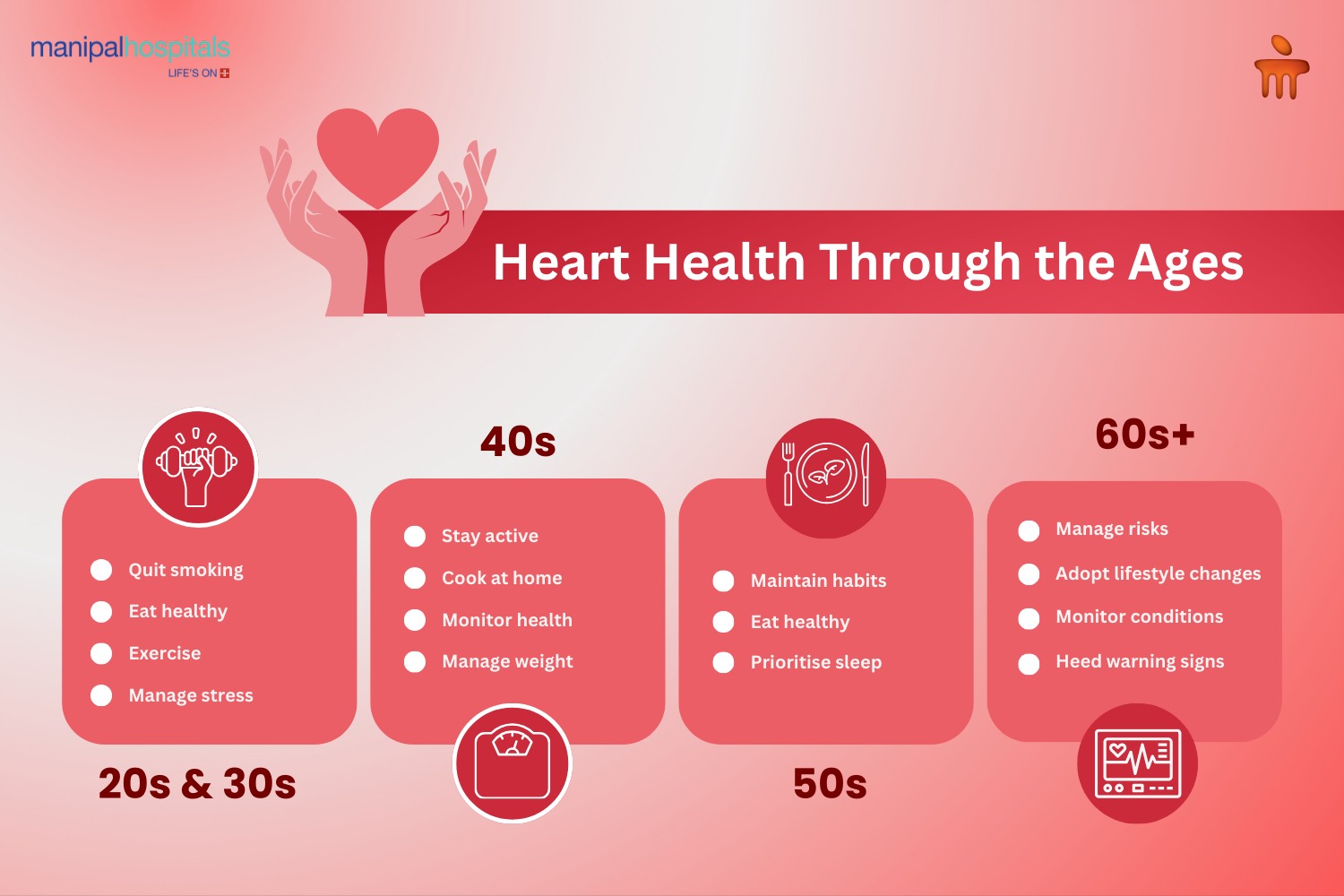
Life After Angioplasty: The Role of Healthy Eating and Exercise

Angioplasty is a crucial procedure that reopens blocked coronary arteries to restore blood flow to the heart. It is performed on patients with coronary artery disease (CAD) who experience chest pain, shortness of breath, or a heightened risk of heart attack. However, life after angioplasty largely depends on certain lifestyle changes that are heart-healthy. This blog explores essential lifestyle changes after angioplasty, especially in diet and exercise, that support angioplasty recovery and long-term heart health, as recommended by experienced cardiologists in Bangalore.
Synopsis
What is Angioplasty?
Angioplasty is a minimally invasive procedure used to clear blocked heart arteries. Blocked coronary arteries restrict oxygen-rich blood flow, increasing the risk of heart attacks. Angioplasty clears these blockages, restoring blood circulation and supporting heart function.
The procedure involves inserting a small balloon into the artery, which is then inflated to restore blood flow. To keep the artery open and prevent it from re-narrowing, doctors often place a stent, a small mesh tube, during the procedure.
Life After Angioplasty: The Role of Diet During Recovery
Angioplasty is a minimally invasive procedure used to clear blocked heart arteries. Blocked coronary arteries restrict oxygen-rich blood flow, increasing the risk of heart attacks. Angioplasty clears these blockages, restoring blood circulation and supporting heart function.
The procedure involves inserting a small balloon into the artery, which is then inflated to restore blood flow. To keep the artery open and prevent it from re-narrowing, doctors often place a stent, a small mesh tube, during the procedure.
Best Diet for Heart Health After Angioplasty:
Adopting a heart-healthy diet can greatly improve outcomes after angioplasty and maintain heart health.
Heart-Healthy Foods
-
Fruits and Vegetables: Rich in antioxidants, vitamins, and fibre, they help reduce inflammation and support heart health
-
Whole Grains: Oats, quinoa, and brown rice help lower cholesterol levels and maintain healthy blood sugar levels
-
Lean Proteins: Fish (rich in omega-3 fatty acids), skinless chicken, and plant-based proteins like lentils strengthen the heart
-
Healthy Fats: Olive oil, nuts, and seeds provide good fats that reduce bad cholesterol.
Foods to Avoid
-
Processed and Fried Foods: These contain trans fats that increase bad cholesterol and arterial blockages.
-
High-sodium and High-sugar Foods: Too much salt raises blood pressure, while excess sugar contributes to weight gain and diabetes.
Exercise After Angioplasty
Regular physical activity is very important for recovery after angioplasty. It improves cardiovascular efficiency, strengthens the heart, and reduces stress. Exercise also plays a key role in weight management and lowers the risk of future arterial blockages.
Benefits of exercise include:
-
Improved blood circulation: Keeps arteries flexible and reduces clot formation
-
Stress reduction: Helps regulate stress hormones and improves mental well-being
-
Better heart efficiency: Strengthens heart muscles and improves overall cardiac function
Safe Exercises for Post-Angioplasty Patients
Patients should begin with light activities and gradually increase intensity under medical supervision.
Recommended Exercises
-
Light Exercises: Walking and stretching in the initial recovery phase
-
Moderate Activities: Cycling and swimming once the body adjusts
-
Cardiac Rehabilitation Programs: Supervised exercise programs that help improve heart strength safely
Precautions
-
Always consult a doctor before starting any workout
-
Avoid high-intensity exercises initially
-
Listen to your body; stop if you feel discomfort or breathlessness
Lifestyle Changes for Long-Term Heart Health
The following lifestyle changes, recommended by expert cardiologists in Bangalore, can help a lot:
Quitting Smoking and Limiting Alcohol
Both smoking and alcohol consumption damage blood vessels and increase the risk of heart disease. Quitting smoking significantly improves arterial function, while limiting alcohol helps maintain healthy blood pressure and cholesterol levels.
Managing Stress
Chronic stress can lead to high blood pressure and inflammation, worsening heart conditions. Effective stress management techniques include:
-
Mindfulness and Meditation - Reduce anxiety and improve emotional well-being.
-
Yoga and Deep Breathing - Promotes relaxation and improves heart function.
-
Engaging in Hobbies - Helps distract the mind and lowers stress levels.
Regular Health Check-Ups
Frequent medical check-ups ensure that angioplasty recovery is progressing well. Doctors monitor cholesterol levels, blood pressure, and overall heart function to detect any early signs of complications.
Support Groups and Family Encouragement
Emotional support plays a crucial role in post-angioplasty recovery. Support groups, counselling, and family encouragement can help patients stay motivated to maintain a heart-healthy lifestyle.
Conclusion
Angioplasty is critical, but its long-term success depends on lifestyle changes. A heart-healthy diet and regular exercise after angioplasty significantly reduce the risk of complications and improve heart function. Avoiding processed foods, engaging in moderate physical activity, and managing stress contribute to a healthier heart. Prioritising diet and exercise can significantly affect your heart health and overall well-being.
FAQ's
Most patients can resume light work in a week, but physically demanding jobs may require 2-4 weeks.
Moderate coffee consumption is usually safe, but excessive caffeine may raise blood pressure. Consult your doctor.
Light lifting is allowed after recovery, but heavy lifting should be avoided initially. Follow your doctor’s advice.
Yes, chronic stress increases blood pressure and inflammation, raising the risk of re-blockage. Manage stress with mindfulness and exercise.
Monthly check-up for a few months is required after angioplasty, followed by every six months to help monitor heart health.
Monthly check-up for a few months is required after angioplasty, followed by every six months to help monitor heart health.





















 5 Min Read
5 Min Read

.png)
















